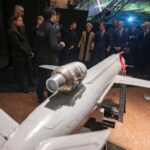
While Kratos [KTOS] annually builds 150 drones, including its Valkyrie XQ-58A, the company could double or triple such production now with existing plants to meet possible surge demands, a company official said on March 1. In light of the Pentagon's materiel aid to Ukraine/depletion in U.S. equipment, the possible need to ramp up production rapidly for future conflicts in which the U.S. becomes engaged, and the stated DoD desire to decrease the likelihood of successful attacks on U.S. supply chains,…














